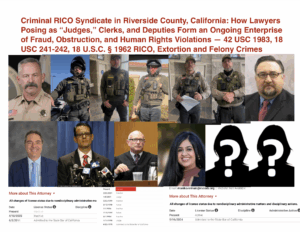I. The Foundation: Equity and the UCC
A. Equity Law
Equity law is guided by principles of fairness and justice, providing remedies where legal rules might fall short. These include:
- Subrogation: Substituting one party for another to recover obligations.
- Constructive Trust: Preventing unjust enrichment by imposing equitable ownership.
- Right of Redemption: Protecting debtors’ ability to recover property upon fulfilling obligations.
- Estoppel: Preventing parties from asserting rights inconsistent with prior actions or representations.
Strengths of Equity:
- Flexibility to adapt to unique circumstances.
- Prioritizes fairness over technicalities.
Weaknesses of Equity:
- Lacks formal structure, leading to unpredictable outcomes.
- Remedies depend heavily on judicial discretion.
B. Uniform Commercial Code (UCC)
The UCC governs commercial transactions, offering predictability, uniformity, and a clear framework for resolving disputes. Its provisions are supplemented by equity, as codified in UCC § 1-103:
- Text: “Unless displaced by the particular provisions of this Act, the principles of law and equity… shall supplement its provisions.”
- Interpretation: The UCC incorporates equitable principles like good faith, estoppel, and fairness to ensure justice within a structured framework.
Strengths of UCC:
- Predictable and uniform across jurisdictions.
- Codified rules provide clarity and efficiency.
Weaknesses of UCC:
- May(might, not must) lack the flexibility to address unique or unforeseen circumstances.
- Formalities can lead to rigid interpretations in certain cases.
II. UCC’s Integration of Equity Principles
A. Offer and Acceptance: UCC §§ 2-206 and 2-204
- § 2-206: Offers can be accepted in any reasonable manner. Shipment of goods or performance constitutes acceptance.
- § 2-204: Contracts can be formed through conduct, even without formal agreement.
- Equity Parallel: These provisions reflect equity’s flexibility by validating agreements based on intent and conduct rather than rigid formalities.
B. Predictability and Formality
- Equity: Focuses on fairness but lacks structured rules for offer and acceptance.
- UCC: Provides clarity through codified principles, such as § 2-206’s allowance for non-traditional acceptance methods, while maintaining predictability.
III. UCC and the Mailbox Rule
The mailbox rule, an equitable principle, is incorporated in § 2-206. Under this rule:
- Acceptance is effective when dispatched, not when received.
- UCC Integration: Ensures timely formation of contracts by treating mail-based acceptances as binding upon dispatch, protecting reasonable expectations of the parties.
IV. Remedies in UCC and Equity
A. UCC § 3-311: Accord and Satisfaction
- Text: A debtor can discharge a claim by tendering payment marked “full satisfaction,” provided the creditor accepts it.
- Equity Reflection: Embodies fairness by ensuring finality in disputes where both parties act in good faith.
B. UCC §§ 3-603 and 3-604: Tender and Discharge of Payment
- § 3-603: Tendering payment discharges the obligation to the extent of the amount tendered.
- § 3-604: Obligations are discharged when:
- The holder intentionally cancels the instrument.
- Rights are renounced in favor of the obligor.
- Equity Reflection: Ensures fairness by allowing discharge through reasonable attempts to fulfill obligations.
C. Predictability in Discharge
- Equity: Lacks codified rules for discharge, relying on judicial discretion.
- UCC: Codified rules, such as §§ 3-603 and 3-311, provide clear pathways for discharge while incorporating equitable doctrines like estoppel.
V. Additional UCC Provisions and Equitable Principles
A. UCC § 2-202: Parol Evidence Rule
- Written contracts can be supplemented by trade usage, course of dealing, or consistent additional terms.
- Equity Reflection: Protects parties from exclusion of terms vital to fairness.
B. UCC § 2-302: Unconscionability
- Courts can refuse to enforce unconscionable contracts or clauses.
- Equity Reflection: Ensures fairness by preventing enforcement of unjust terms.
C. UCC §§ 3-303 and 3-409
- § 3-303: Requires consideration for negotiable instruments, ensuring fairness in exchanges.
- § 3-409: Recognizes conduct and intent in acceptance of drafts, protecting equitable expectations.
VI. Equity’s Strength in Flexibility vs. UCC’s Strength in Predictability
A. Flexibility
- Equity: Adapts to unique circumstances but lacks formal standards.
- UCC: Balances flexibility with structured rules, incorporating equitable doctrines for fairness.
B. Predictability
- Equity: Outcomes vary based on judicial discretion, making it less predictable.
- UCC: Provides uniformity and predictability through codified rules supplemented by equity.
C. Efficiency
- Equity: May require extensive litigation to determine fair outcomes.
- UCC: Offers clear, efficient remedies without sacrificing fairness.
VII. Real-World Applications
Case 1: Full Satisfaction Under § 3-311
- A debtor marks a check “full satisfaction” and the creditor accepts it. The claim is discharged, reflecting equitable principles of finality within UCC’s structured framework.
Case 2: Offer and Acceptance by Conduct (§ 2-206)
- A seller ships goods without a formal contract, and the buyer accepts them. The UCC validates this as a binding agreement, mirroring equity’s focus on intent and fairness.
VIII. Conclusion
The UCC’s incorporation of equity principles bridges the gap between flexibility and predictability. By codifying equitable doctrines, such as estoppel, discharge, and unconscionability, the UCC provides remedies that align with fairness while ensuring uniformity and efficiency. Equity’s strength lies in its adaptability, but the UCC’s structured approach offers the additional benefit of clear, predictable outcomes. Together, they create a comprehensive framework for resolving disputes and enforcing obligations in both commercial and equitable contexts.




